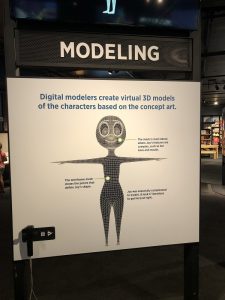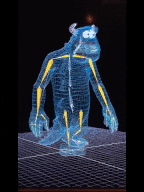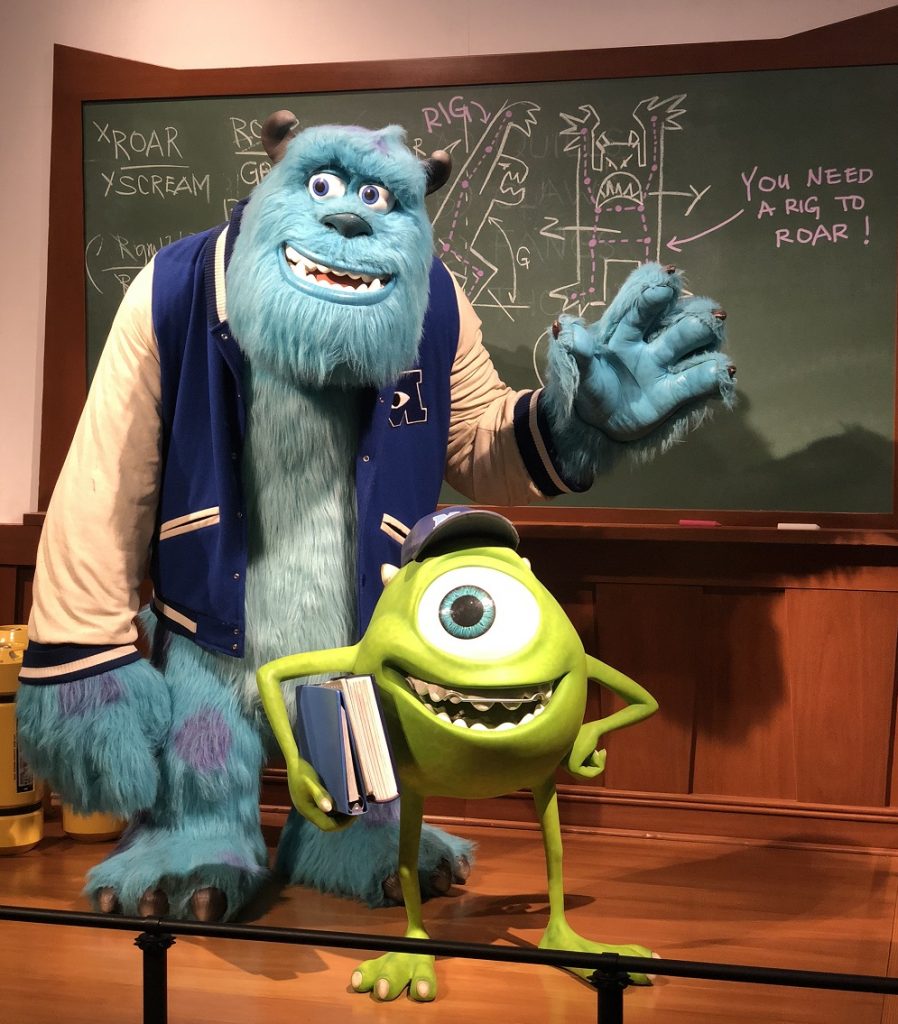Last Friday we went on a work field trip to discover the magic behind Pixar Animation Studios through an exhibit at the Museum of Science and Industry in Chicago, IL. Since we offer classes using Maya software, we wanted to understand Pixar’s relationship with it, so we decided to check it out for ourselves. We learned a lot from our visit, like the steps in the production pipeline, and their relationship to each other at Pixar. The exhibit was so interesting that we came back to the office and dove deep into some research to understand even more about what goes on behind the scenes at Pixar.
Pixar’s Production Pipeline looks like this but it isn’t always linear:
- Story and Art
- Modeling
- Rigging
- Surfaces
- Sets and Cameras
- Animation
- Simulation
- Lighting
- Rendering
Everything starts with drawings, clay models, and a storyboard. First there needs to be a story, and to help communicate/visualize the story, mass amounts of sketches are done. Sketching skills will always be valuable. Later the artists create virtual 3D models. These virtual 3D models are created using software such as MAYA.
Maya is one of the most popular powerful 3D software for 3D animation. Some have stated “Maya’s biggest strength is how easy it is to modify, that’s a big reason it’s so widely used.”
You can write your own scripts and tools to help you work faster. It is a powerful 3D modeling and animation software used by large studios and freelancers.
Pixar worked in collaboration with Autodesk, the creator of Maya, to build a robust software to meet the creative and workflow needs for their films; Pixar named it “Presto”. It has a similar interface as Maya or 3DSMax, but it has a unique workflow that aids digital artists in different parts of the process. This software harnesses collaborative power. Multiple artists can work on the same scene but on different layers simultaneously. One person can be working a character and the other on the scene background.
Subdivision
The model starts as a wireframe of a 3D shape. The goal for the digital artist is to create an organic and believable looking model. Some of these characters have very detailed and complex curves and surfaces. To have more control and more detail when modeling , subdivision takes place. The more points there are on a shape, the more control and manipulation is possible. Through Maya, a subdivision surface allows specific regions of a mesh to be subdivided, giving the ability to finely tune or smooth certain areas without changing the entire mesh. The mesh is most dense at the most complex features, such as on a characters face.
In order to help further innovate the software so it could more effectively meet the needs for pixar’s films, they have developed software themselves that is meant for them and anyone else that would like to use it. They call this endeavor the OpenSubDiv project. Pixar explains — “OpenSubdiv is a set of open source libraries that implement high performance subdivision surface evaluation on massively parallel CPU and GPU architectures. This code path is optimized for drawing deforming surfaces with static topology at interactive frame rates.”
OpenSubdiv is an API ready to be integrated into 3rd party digital content creation tools. It is not an application, nor a tool that can be used directly to create digital assets.

OpenSubdiv Advantages:
- Flexible mesh topology –
- efficient representation for smooth shapes
- semi-sharp creases for fine detail and hard surfaces
Rigging
Brian Green, rigging technical director for Pixar, explains rigging as “a process of adding controls to a digital model to allow animators to move it around and act. When you look at the way a living being moves, every motion they make causes a reaction in every other part of their body.”
When a character like Sully from Monsters inc smiles, it’s not only his lips that move, but his jaw, cheeks, chin, and eyes that move as well. When there is movement in one place, there will be automatically movement at another, and the amounts of movement are relative — think (x,y) coordinates like back in your math class days. Riggers create the virtual joints and muscles that allow the models to move. Pixar, and the software they use, are great examples of real life applications using math, and they did just that in their exhibit at the museum. Everyone at the Pixar exhibit had a chance to control the rigging for a few characters through a few interactive displays.

Lighting
Pixar developed a new Global Illumination system which produces automatic reflections and shadows based on the placement of lights. Ambient Occlusion, which is a shading and rendering technique used to calculate how exposed each point in a scene is to ambient lighting. An example of this would be the interior of a cave which is typically more occluded than the exposed outer surfaces, and the deeper inside the cave you go, the darker the lighting becomes.
Pixar uses science, math, art, and magic. Well, they don’t use magic, but their films do look magical. We’ve only covered some of the Production Pipeline here, for more information please visit the following links: OpenSubdiv Project, More about Open Subdivision, “Welcome to Pixar”


